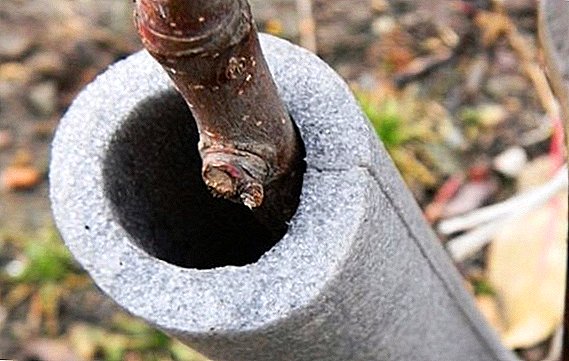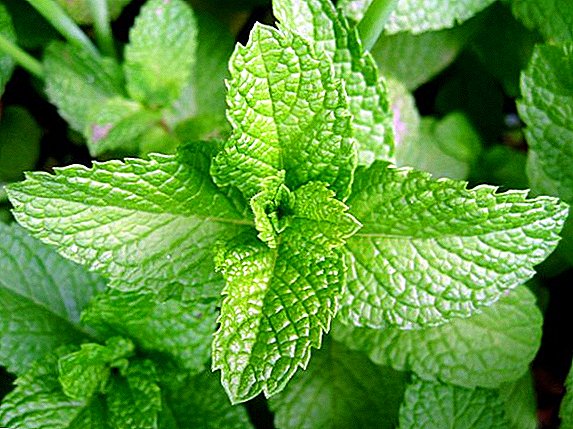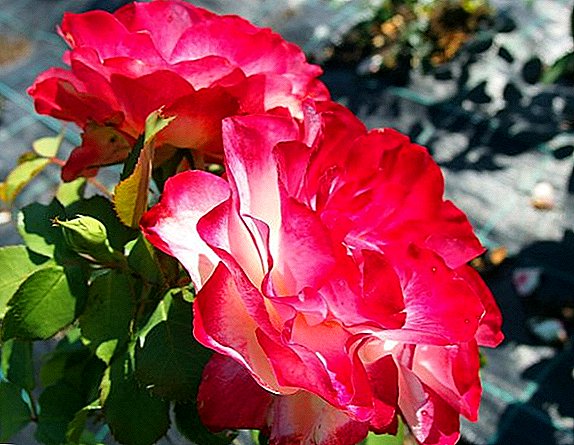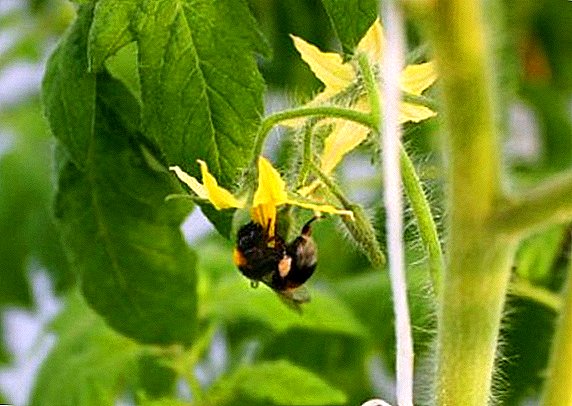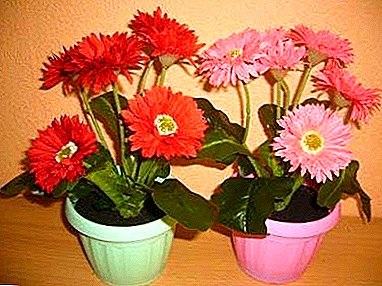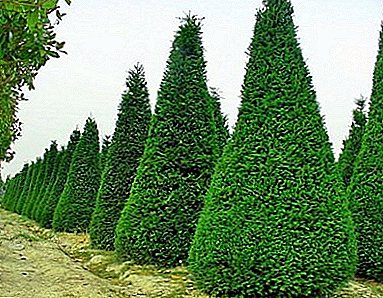
In ornamental gardening, evergreens have always been highly valued.
Especially in the northern regions of the country, where summer flies very quickly, and people do not have time to fully enjoy not that aroma of flowers, but a simple green forest or garden.
Among the evergreen ornamental shrubs and trees are most often found juniper, thuja, fir. But occasionally you can meet and decorative pyramidal cypress. Cypress, unlike tui, for example, is less whimsical in care, and feels quite comfortable in the dry air of the room.
Cypress in the northwestern and northern regions is grown in comfortable tubs, so that in the summer it would be possible to move the plant to the garden.
Description
By nature, a pyramidal cypress is formed very dense, narrow pyramidal crown from the branches, ascending upward and very tightly pressed to the trunk. Young plants have a light brown bark. With age, the color of the tree bark changes to brown. Leaves scaly, small in size.
Needles have an elongated rhombic form, and are arranged crosswise. Pyramid cypress cones are woody, round. Grayish brown. On scales there is a thorn. Externally, the bump resembles a soccer ball. In each cone up to 20-30 seeds are formed.
A photo
Evergreen cypress: photo of this species of plant.



Care
Cypress pyramidal, like any coniferous indoor plant, resistant to cold. And at a low temperature, it reacts normally. But if you buy a young tree in the store, it is worthwhile to clarify the conditions in which the cypress grew.
If the yard is a warm season, it can be left outdoors. Unless, of course, there is such an opportunity. In the conditions of the apartment cypress is better to put on the balcony.
But indoor cypress must be placed as close as possible to the light source. Even at the windows on the south side. After all, in winter the amount of light is small, and the sun will not be able to damage the plant.
But you should know that if the cypress gets enough light, it will start to lose its pyramidal shape and stretch out. And the leaves will begin to turn yellow and eventually completely crumble. The cypress can be placed both on the windowsill and on the floor.
Watering plants
 Watering pyramid cypress also depends on the time of year. In summer, the plant should be watered regularly and intensively. However, the bay is not allowed!
Watering pyramid cypress also depends on the time of year. In summer, the plant should be watered regularly and intensively. However, the bay is not allowed!
The land in the pot should be constantly wet, but there should be no water in the pan. If the cypress is in the room, then you should regularly spray the needles.
Water Must be at room temperature, pre-settled. Otherwise, with a lack of moisture, drying will occur.
If the temperature in the room is 8 degrees, then water the plant once a decade. The higher the temperature, the more often the cypress should be watered.
The soil
When planting plants There are several important points to consider.:
- availability of drainage. If in the bottom of the pot there are no holes for water drainage, then they must be done! At the bottom you can lay a layer of expanded clay, or pebbles, foam, broken brick or ceramic shards. The layer of material should be 1/5 of the height of the flowerpot;
- the soil. The soil should be poured on top of the drainage layer. In principle, you can use the finished soil mixture for conifers. But you can make it yourself.
The optimal composition of the soil for pyramidal cypress is: leaf soil - 2 parts, peat land - 1 part, sod land - 1 part, sand - 1 part. The soil should be slightly acidic PH level 5.5-6.5.
The root neck of the plant should not be buried in the ground! The plant may die!
Fertilizers
 In the case of cypress fertilizer should be used with extreme caution. Habitual complex fertilizers or garden mixtures for pyramidal cypress are not suitable. After all, with a large amount of humus, the plant will simply burn.
In the case of cypress fertilizer should be used with extreme caution. Habitual complex fertilizers or garden mixtures for pyramidal cypress are not suitable. After all, with a large amount of humus, the plant will simply burn.
Therefore, it is necessary to use caution specially fertilizer for conifers, which is produced in liquid form. And take half of the recommended dose. Top dressing of a cypress is made during the period May-August.
notethat when choosing a fertilizer, be sure to pay attention to its composition. There must necessarily be magnesium! But all kinds of organic additives (mullein, manure, etc.) should not be at all! Or they should be the minimum number.
Transfer
Pyramid cypress tree quite actively absorbs nutrients from the soil. Yes, and the roots grow from him very quickly. As soon as the roots begin to appear in the drainage holes of the pot, requires plant handling. Usually a transplant is performed every 2 years.
But it must be remembered that the cypress root system is very sensitive to damage. Therefore, transplant it very carefully, taking out of the old pot with a clod of earth.
As a rule, most of the old land is crumbling, and it remains to install the cypress in a larger pot (with quality drainage, of course), and fill it with new soil.
Breeding
Cypress pyramidal multiplies seeds or cuttings. If a plant is to be propagated in the spring, this is done only by seed. In summer and autumn, cypress can be propagated by cuttings.
Seeds
For this method of reproduction is used even green but already revealed bumps. As practice shows, about a quarter of the planted seeds sprout. After planting, for the first 2 weeks the ground should be regularly moistened in a box with planted seeds, and the box itself should be placed in a shaded place.
After the first saplings come through, the container is brought out into the sun, and the soil continues to be regularly moistened. After 30 days, each sprout is planted in a separate pot.
Cuttings
For this type of breeding take apical cuttings. A pot with a planted cutting is installed in a room with high humidity. Usually this is a special greenhouse. It will not be superfluous to use a growth stimulator for the plant root system. It should be prepared for the fact that with this method of propagation the cutting may not take root.
Diseases and possible pests
 Cypress is a disease resistant plant. And if the disease does occur, then this is in most cases due to the fact that the plant is improperly looked after.
Cypress is a disease resistant plant. And if the disease does occur, then this is in most cases due to the fact that the plant is improperly looked after.
There are a lot of fungicides in cypress wood that do not allow spore and fungal diseases to develop.
Now a little more about diseases:
- if the cypress leaves began to turn yellow, it means that the room has dry air, the plant is not watered, or there is an excess of calcium in the soil. It is necessary to replace the soil and provide cypress with high-quality watering, and perform regular spraying of the leaves with clean water;
- if the leaves began to darken the tips, then you should check if the cypress touches the window glass. Brown tips can also indicate a draft or lack of watering in the room;
- if the needles begin to turn yellow and fall off, then it is quite possible that there is an excess of direct and bright color. It is enough to rearrange the cypress in the shade;
- if the cypress is drawn, then the plant most likely lacks light. The intensity of the lighting must be increased.
AND about pests:
- if the air in the room is very dry, then the likelihood of a spider mite on the cypress leaves is very high. Between the branches you can see the web, and the leaves dry quickly and fall further. The fight against this pest is very simple: next to the plant, the air is regularly moistened, and the cypress itself is sprayed with a 0.15% solution of antilla;
- scytas settle on the trunk and leaves of cypress in the form of brown plaques. These parasites feed on cell sap, which is sucked out of the plant. As a result, drying and leaf fall occur. It is impossible to mechanically combat these pests.
The plant is bathed in an atellic solution, or the plant is sprayed with the same solution several times a day. Repeat this procedure regularly until the pest completely disappears. Karbofos or aktar can also be used with high efficiency.
Cypress grows pretty fast. And already at the age of 5-6 years, he begins to bear fruit. If the plant is properly cut, the cypress crown will be more dense. For this, in spring and summer, branches are shortened throughout the entire crown.
The pyramidal cypress will completely provide your house with excellent coniferous aroma. And the presence of a large number of fungicides in the wood of the plant makes the air in the room healing.





